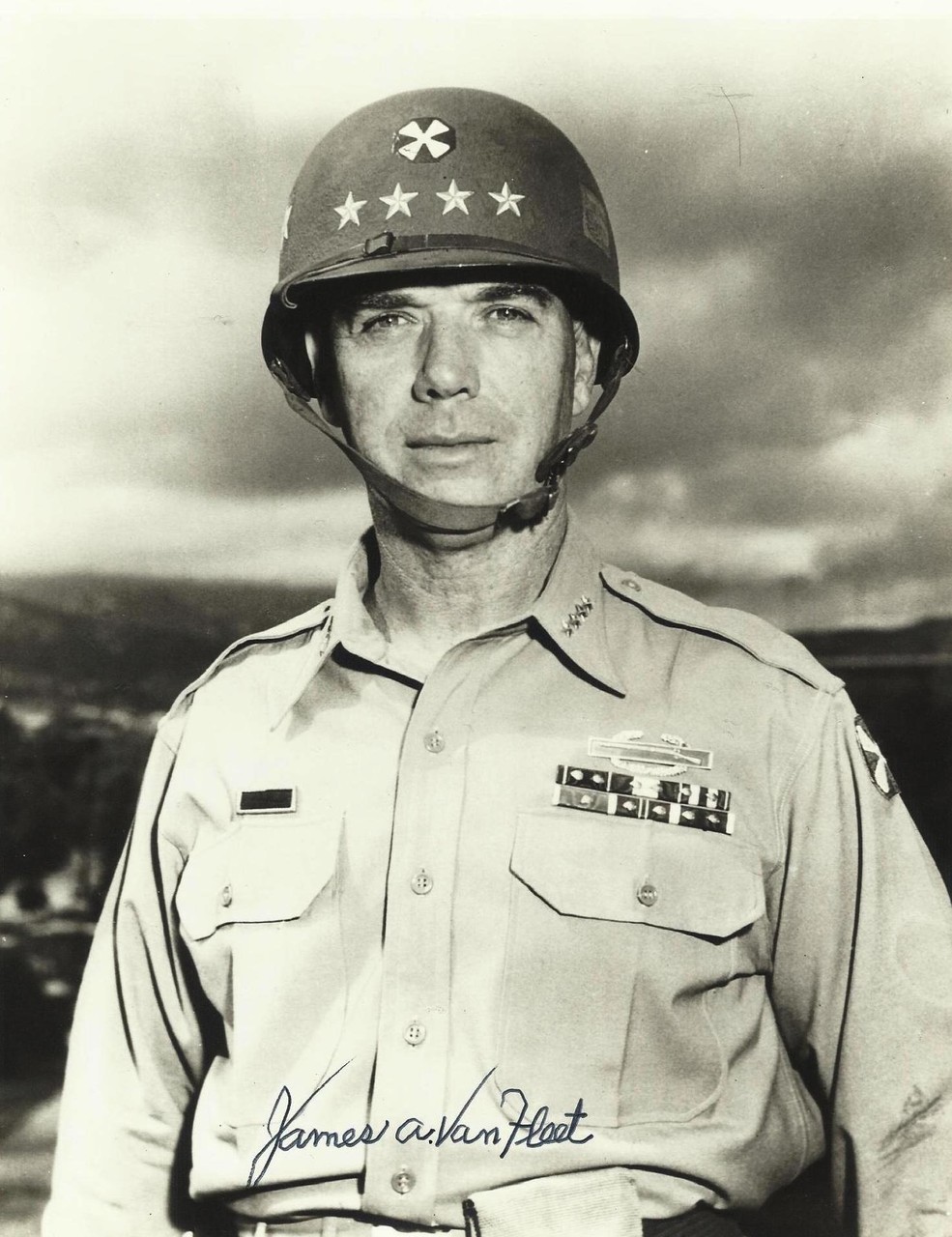When the US 90th Infantry Division attacked from Nothum towards Donkols on 9 January 1945, General Van Fleet personally went to the frontline to demonstrate to the troops in front how important the success of this attack was for the top leadership.
Moreover, Van Fleet did not demand any sacrifices that he himself was not prepared to make. He was therefore well respected by the troops.
When the advanced command post lay in ruins under heavy artillery fire, he stood stoically in a window opening, regardless of the impacting fragments, to observe where the fire was coming from. A direct hit left Van Fleet unhurt, but three officers beside him were killed and several wounded. His steadfast attitude inspired the soldiers to attack despite all the losses, and the day's objective was achieved.
When Van Fleet was back in the frontline with the troops the following day, General Patton appeared at Van Fleet's divisional command post at Insenborn for a front-line visit. General Patton inquired in the map room about the line of the front, and an excited adjutant mistook the entry of a patrol that had advanced as far as Donkols for the actual spearhead which remained far from the objective.
The elated General Patton then praised the US 90th Infantry Division in front of some war correspondents. General Patton had hardly left the front when the misstatement was discovered.
When General Van Fleet was informed of this, an apology to General Patton was deemed out of the question.
Against all expectations, he commanded an improvised night attack to reach the Donkols road junction before the division report was sent out.
By ruse and with plenty of luck, the daring night attack took place silently on the interface between two enemy divisions through Pommerloch to the vicinity of Donkols.
It was only when the American advance was exposed that important positions had already been bypassed and a deep penetration into the enemy defence line had been achieved. This incredible coup de main allowed Donkols to be taken the following day after a hard battle. It was now too late for enemy counter attacks.
Despite stiff resistance, General Van Fleet was able to unite with the US 35th Infantry Division, which had advanced from Bastogne, at Bras on 12 January 1945 and close the Kessel of Harlange. Thousands of German soldiers were taken prisoner.
Once again, it was General Van Fleet's exemplary strong ‘will to win’ that had proved its worth.
